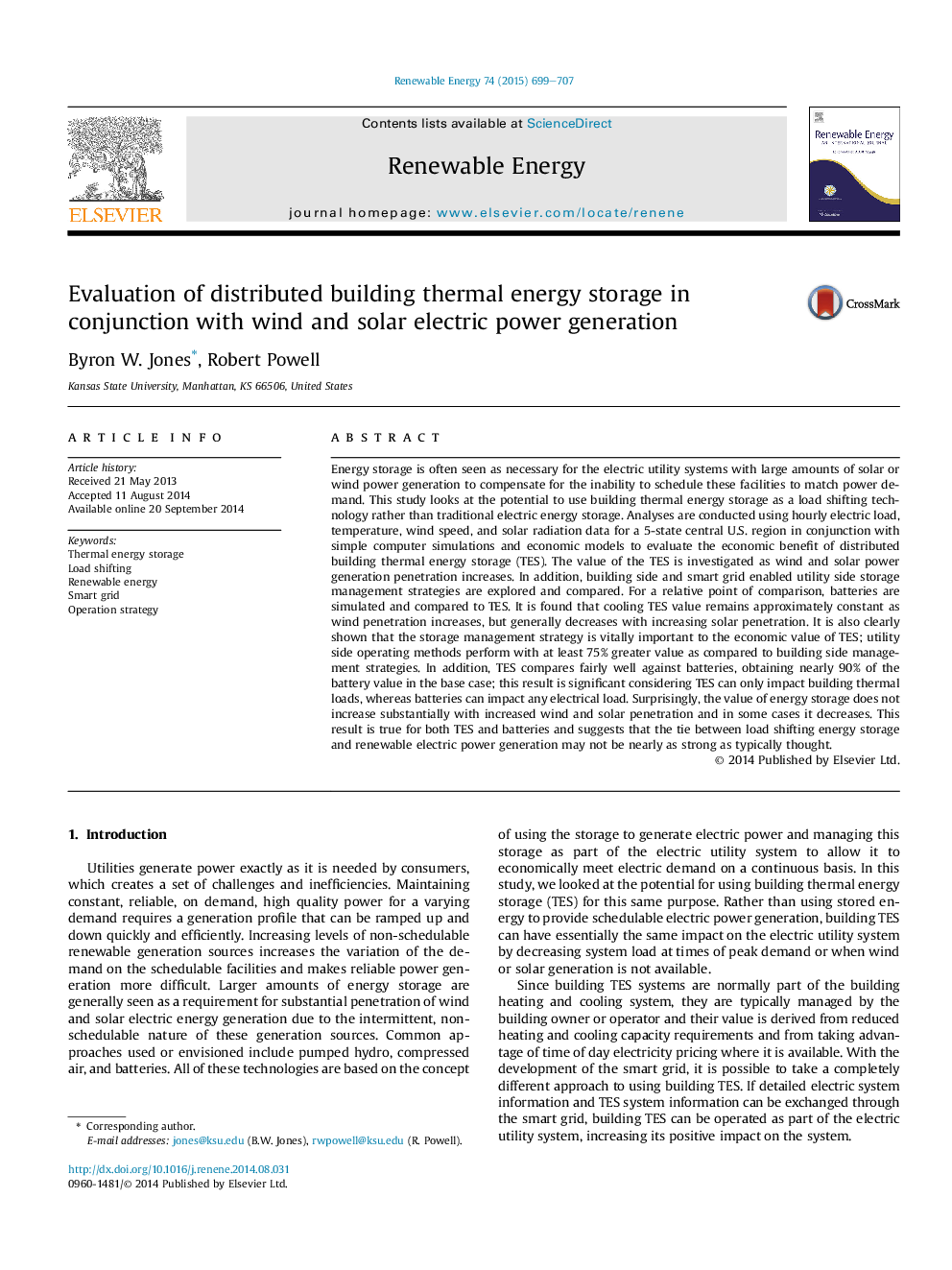| کد مقاله | کد نشریه | سال انتشار | مقاله انگلیسی | نسخه تمام متن |
|---|---|---|---|---|
| 300023 | 512465 | 2015 | 9 صفحه PDF | دانلود رایگان |
• The electrical load shifting capability of distributed thermal storage is modeled.
• The value of thermal storage is investigated as renewable penetration increases.
• Storage system value per kW is roughly constant with increasing renewable power.
• Thermal storage compares favorably to batteries in load shifting potential.
• Smart grid operation is greater than 75% more valuable than building side operation.
Energy storage is often seen as necessary for the electric utility systems with large amounts of solar or wind power generation to compensate for the inability to schedule these facilities to match power demand. This study looks at the potential to use building thermal energy storage as a load shifting technology rather than traditional electric energy storage. Analyses are conducted using hourly electric load, temperature, wind speed, and solar radiation data for a 5-state central U.S. region in conjunction with simple computer simulations and economic models to evaluate the economic benefit of distributed building thermal energy storage (TES). The value of the TES is investigated as wind and solar power generation penetration increases. In addition, building side and smart grid enabled utility side storage management strategies are explored and compared. For a relative point of comparison, batteries are simulated and compared to TES. It is found that cooling TES value remains approximately constant as wind penetration increases, but generally decreases with increasing solar penetration. It is also clearly shown that the storage management strategy is vitally important to the economic value of TES; utility side operating methods perform with at least 75% greater value as compared to building side management strategies. In addition, TES compares fairly well against batteries, obtaining nearly 90% of the battery value in the base case; this result is significant considering TES can only impact building thermal loads, whereas batteries can impact any electrical load. Surprisingly, the value of energy storage does not increase substantially with increased wind and solar penetration and in some cases it decreases. This result is true for both TES and batteries and suggests that the tie between load shifting energy storage and renewable electric power generation may not be nearly as strong as typically thought.
Journal: Renewable Energy - Volume 74, February 2015, Pages 699–707
